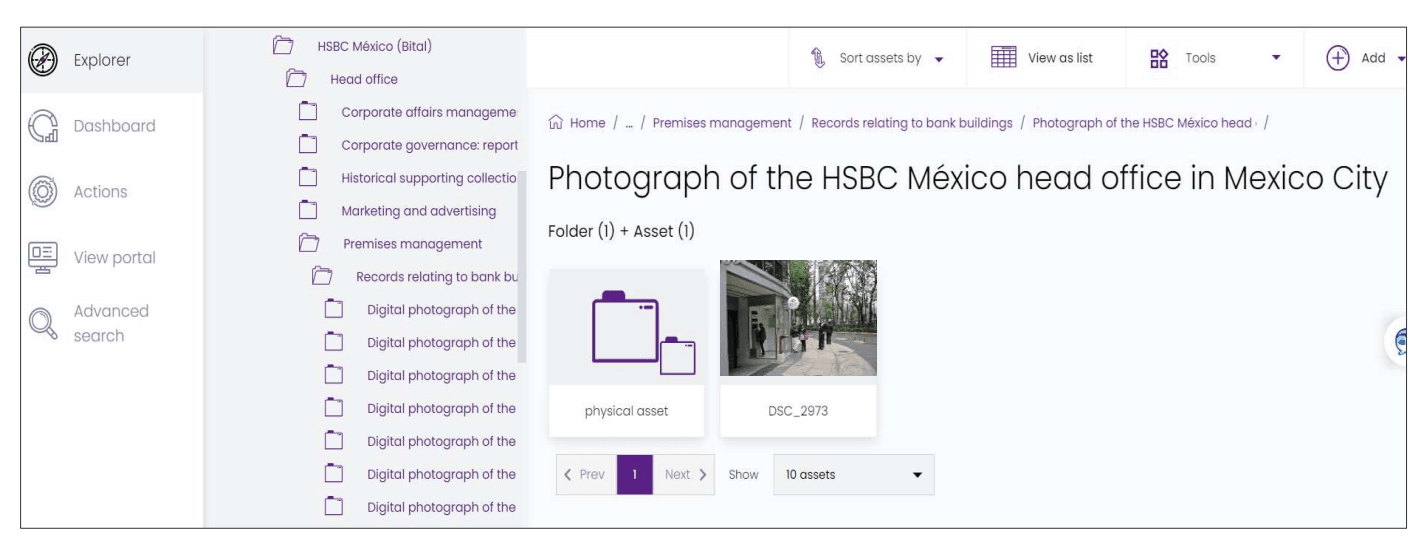HSBC Global Archives' strategic shift to Digital Preservation in the cloud
 James Mortlock, Senior Digital Archives Manager, HSBC
•
March 14, 2024
James Mortlock, Senior Digital Archives Manager, HSBC
•
March 14, 2024

Overview
Preserving corporate history is not just a matter of archiving documents—it's about safeguarding the legacy and heritage of an institution for generations to come.
For HSBC, a globally recognized bank, managing its extensive corporate collection is of vast importance. These archives encompass a range of materials such as annual reports, minute books, banknotes and more. They not only document the bank's evolution but also highlight employee contributions and the socio-economic history of the communities they serve.
The bank has made it a priority to safeguard its modern history for the long term. However, as technology evolves, so too must the preservation methods. Sensing the age of its GDA physical server system, HSBC’s Senior Digital Archives Manager James Mortlock recognized the potential of a cloud-based Digital Preservation platform and the need for an architecture renewal and upgrade project.
With archives teams located in London, Hong Kong, New York and Paris – HSBC needed a secure system. This was essential because many digital materials are business records, therefore it is crucial to ensure stakeholders have confidence in their ability to preserve and securely store these digital records.
HSBC's Digital Preservation dilemma: internal renewal vs. cloud hosting
In 2022, HSBC faced challenges with its aging Digital Preservation system. The system, built on a physical server architecture in 2012, was difficult to maintain. With support issues arising from incompatible components and software upgrades, the bank needed to consider its options.
Two options were initially considered:
1. Internal Renewal
Purchasing new server equipment and setting it up in HSBC's data centers, followed by installing a new preservation platform and migrating data and assets. This option offered continuity of service and allowed for a similar architectural setup. However, it came with high costs for maintaining physical servers and internal storage, along with challenges in keeping up with software updates and vendor divergence.
2. Cloud Hosting
Hosting the digital archive platform within the HSBC Cloud, a secure platform provided by a major cloud provider. This option was more cost-effective, with up to profound cost savings compared to physical servers. However, the closed nature of the HSBC Cloud posed challenges for maintenance and software updates, as it limited integration with external vendors.
While cloud platforms offer easy deployment of fixes and updates, the locked-down HSBC Cloud would have made it difficult to connect the preservation system for vendor updates. This left them with a difficult choice between the expense and legacy issues of internal renewal and the potentially complex maintenance of cloud hosting.
When confronted with this decision, HSBC initially wanted to build a case for renewing on-premise servers because they were concerned about the limitations of the internal cloud options. However, the bank's change in policy for cloud use allowed for the use of external clouds from trusted third-party vendors, shifting their perspective and prompting a reassessment of their Digital Preservation strategy.
Benefits of Digital Preservation within the cloud
By leveraging Digital Preservation within the cloud, HSBC gains several benefits that span across the past, present and future of their archival efforts.
Past
- Enhanced safeguards for existing digital data through disaster recovery protocols and multi-server backups.
- Utilization of economies of scale offered by major cloud providers (e.g., Amazon, Google, Microsoft) for improved performance, stability and security.
Present
- Reduced reliance on internal IT infrastructure, providing almost limitless server design and configuration capabilities tailored to Digital Preservation needs.
- Increased connectivity facilitating seamless integration with external-facing applications, such as the HSBC history website, streamlining content-sharing processes and saving time.
Future
- Real-time capacity management and forecasting, eliminating concerns about storage planning and allowing for responsive scaling with endless storage and processing power.
- Continuous service renewal and access to up-to-date server components, reducing the need for end-of-life architecture planning and ensuring the platform remains fit for future needs.
- Automated testing and deployment of updates, receiving new tooling and registry updates regularly and sponsoring development work for high-priority preservation areas.
The drive to migrate to external cloud environments
During HSBC's shift to a cloud-based Digital Preservation system, they faced two main challenges:
1. Cybersecurity and technical rollout issues
Since HSBC was among the first to plan such a migration in their industry, they had to keep rigorous cybersecurity frameworks in check. Adhering to these protocols sometimes required product modifications and aligning vendor operations with HSBC's standards.
The biggest barrier was that the transition required updating data security and cross-border data transfer standards. To conduct these security checks, close collaboration was necessary among legal and IT departments spanning multiple jurisdictions.
2. Metadata challenges and change management
HSBC had to phase out its current cataloging tool, as it was incompatible with Preservica’s upgraded Digital Preservation system.
When discontinuing their old cataloging tool, HSBC faced the choice of either finding a replacement that could integrate with their Digital Preservation platform or collaborating with Preservica to enhance the platform with robust metadata management capabilities suitable for a busy corporate archive.
Prioritizing the consolidation of all data within one platform, HSBC drafted specifications for managing ISAD(G) compliant catalog metadata for their physical, digitized and born-digital collections within a system primarily designed as a digital asset repository.
This process required compromises as they adapted cataloging procedures to a system not originally intended for this purpose. Additionally, they needed the system to accommodate physical records, which required assigning metadata to objects not in the system. Finding the right balance between managing physical and digital records, along with their metadata, involved exploring various solutions and reevaluating their cataloging system needs.
Metadata management made easy with Preservica Enterprise edition
HSBC decided to entrust Preservica with creating a new metadata management solution tailored to address their compliance, integration and scalability requirements.
Preservica’s Enterprise edition allowed them to manage digital and physical assets separately for preservation actions while collectively managing descriptive catalog metadata. This involved storing descriptive metadata for both physical and digital assets within a parent folder.
The cataloging process was then streamlined to ensure intuitiveness, with responsive forms displaying relevant metadata fields based on the type of record being cataloged. Additionally, since users required a fast and responsive search function capable of searching specifically on metadata, the system underwent enhancements to enable the customizability of search fields, empowering users to search based on desired metadata fields.

The future of Digital Preservation at HSBC
Shifting to the cloud is just the beginning. HSBC has more goals to achieve from Preservica’s new generation Enterprise edition, such as:
- Provide comprehensive training and support for users, including self-service tools and regular updates to improve system use and efficiency.
- Create real-time capacity management and forecast for responsive, cost-effective storage and processing power adjustments.
- Upgrade the platform to reduce end-of-life planning and easily implement new tools and updates.
- Stay alert to receive automatic updates and influence development work for priority areas.
By leveraging Preservica Enterprise, HSBC is not only ensuring the continued security and accessibility of its digital collections but also positioning itself at the forefront of the Digital Preservation curve.
Discover how Preservica's Enterprise edition empowers HSBC's archival team to efficiently manage metadata for both physical and digital assets in one platform. Click here to watch our recent webinar with James Mortlock to learn more about the benefits of enhanced metadata capabilities.




